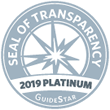Clinical Thyroidology for the Public summarizes selected research studies discussed in the previous month’s issue of Clinical Thyroidology, an official publication of the American Thyroid Association. Editor-in-chief, Alan Farwell, MD, FACE
Available in pdf format for saving and printing and Web page format for viewing online
PDF Format for Saving and Printing
Clinical Thyroidology for the Public Volume 14 Issue 6 (PDF file, 5.85MB)
TABLE OF CONTENTS – Web Format
THYROID CANCER
Active surveillance for papillary thyroid microcarcinomas
The ATA guidelines recommend 2 possible options for management of papillary thyroid microcarcinomas, which are considered low risk cancers: 1) thyroid lobectomy as a definitive treatment or 2) active surveillance. However, a small minority of papillary thyroid microcarcinomas do have aggressive features on pathology and may not be low risk. The aim of this study was to determine how common these microcarcinomas are and how many have aggressive features using a large database of patient with papillary thyroid microcarcinomas who also had surgery.
Al-Qurayshi Z et al 2020 Wolf in sheep’s clothing: Papillary thyroid microcarcinoma in the US. J Am Coll Surg 230:484– 491. PMID: 32220437.
THYROID CANCER
Who is eligible for active surveillance in a population with a restrictive diagnostic protocol?
A worldwide increase in the incidence of small papillary thyroid cancers has been observed in the past couple of decades. This trend, however, shows clear regional differences. Active surveillance has been presented as an approach toward minimizing thyroid cancer overdiagnosis and overtreatment. This study describes characteristics of patients with small papillary thyroid cancers, as well as the proportion of patients who are potential candidates for active surveillance for low-risk thyroid cancers in the Netherlands.
Lončar I et al 2021 Active surveillance for papillary thyroid microcarcinoma in a population with restrictive diagnostic work-up strategies. Thyroid. Epub 2021 Jan 11. PMID: 33430696.
THYROID NODULES
Risk of clinically significant thyroid cancer is low during long-term follow-up of thyroid nodules
Thyroid biopsies are performed to identify those nodules that require surgery. Biopsy results are ranked according to the risk of cancer in a system known as the Bethesda System. This study was done to evaluate the risk of cancer in each Bethesda category by examining both surgical and long-term clinical outcomes in patients who did not undergo surgery.
Ng DL et al 2021 A large thyroid fine needle aspiration biopsy cohort with long-term population-based follow-up.Thyroid. Epub 2021 Jan 29. PMID: 33371796.
THYROID CANCER
What is the ideal age cutoff for papillary and follicular thyroid cancer staging, and should the cutoffs be different?
Currently papillary and follicular thyroid cancer is staged using the same criteria. Age is included in the staging criteria as older age is a known risk factor for increasing risk of death in thyroid cancer and recently the age cutoffs were changed. This study examined if there should be a different age cutoff for the two different types of thyroid cancer.
van Velsen EFS et al 2021 Finding the optimal age cutoff for the UICC/AJCC TNM staging system in patients with papillary or follicular thyroid cancer. Thyroid. Epub 2021 Mar 4. PMID: 33487121
THYROID CANCER
Combination pembrolizumab plus lenvatinib may be a treatment option for patients with anaplastic and poorly differentiated thyroid cancer
Anaplastic thyroid cancer (ATC) and poorly differentiated thyroid cancer (PDTC) are rare but very aggressive type of thyroid cancer. Both have 10-year survival rates of 5-10%. Despite of the significant progress and the availability of numerous combination chemotherapies to treat cancer, treatment options for ATC and PDTC are still limited. The goal of this study was to evaluate the response of a combination of 2 new types of chemotherapy in patients with metastatic ATC and PDTC who failed standard chemotherapy.
Dierks C et al. 2021 The lenvatinib/pembrolizumab combination is an effective treatment option for anaplastic and poorly differentiated thyroid carcinoma. Thyroid. Epub 2021 Jan 28. PMID: 33509020.
THYROID NODULES
The role of radio-frequency ablation and laser therapy for benign thyroid nodules
Radio-frequency ablation and laser ablation are 2 non-surgical options to decrease the size of thyroid nodules. These procedures are currently being used more frequently in Europe, but are gaining popularity in the United States. This study reviewed the experience of multiple centers in Italy using these techniques and the rates of nodule regrowth and need for repeat treatment after the initial therapy.
Bernardi S et al 2020 Five-year results of radiofrequency and laser ablation of benign thyroid nodules: A multicenter study from the Italian Minimally Invasive Treatments of the Thyroid Group. Thyroid 30:1759–1770. PMID: 32578498.









